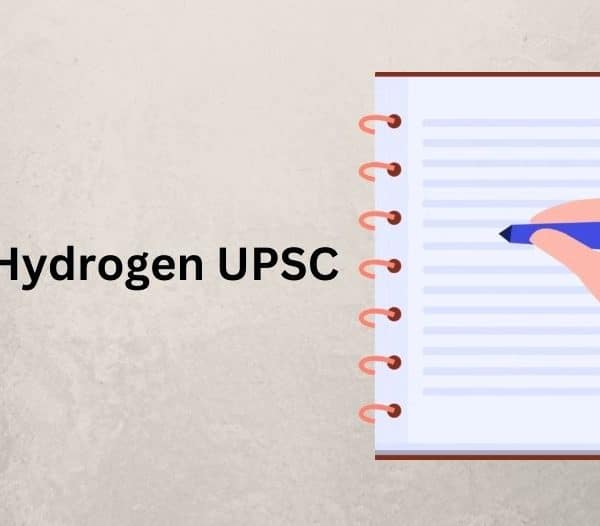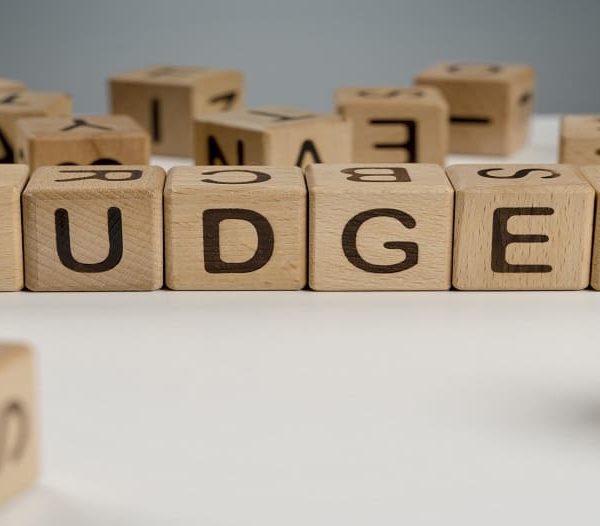The UPSC exam is not easy at all. It requires a lot of concentration, hard work, and dedication. But, those who put these traits together find it convenient to crack. Gearing up for the upcoming UPSC exam? Looking for an Indian economy syllabus for UPSC 2021? If your answer is yes then you have reached the right page. This article will give you the relevant key points related to the Indian economy.
All the candidates must know the country and its system precisely. If you are competing to be an administrative officer of such a big democratic nation, you must know the economic structure and related facts.
Let’s read the article till the end to know everything that you should about the UPSC IAS syllabus. Once you go through this complete blog, you will understand the economic situation of the nation and the ways to improve it to make the country the best place to live.
Also Read: Botany Syllabus for UPSC IAS Exam: Check Out the Knowledge and Facts about the Optional Subject
UPSC Economy Syllabus
Do you want to grab the information about the UPSC economy syllabus? Here is the complete syllabus of the subject. In the UPSC IAS exam, the optional subject consists of 2 papers. Each paper is of 250 marks. The question paper is of 500 marks in total. Let’s excel the paper with flying colors by going through the syllabus and working effectively on it. Look below to understand the complete syllabus.
Paper – I
#1. Advanced Microeconomics
Marshallian and Walrasian Approach to Price determination.
Alternative Distribution Theories: Ricardo, Kaldor, Kaleeki.
Market Structure: Monopolistic Competition, Duopoly, Oligopoly.
Modern Welfare Criteria: Pareto Hicks & Scitovsky, Arrow’s Impossibility Theorem, A.K. Sen’s Social Welfare Function.
2. Advanced Macroeconomics
Approaches to Employment Income and Interest Rate determination: Classical, Keynes (IS-LM) curve, Neo classical synthesis and New classical, Theories of Interest Rate determination and Interest Rate Structure.
3. Money – Banking and Finance
Demand for and Supply of Money: Money Multiplier Quantity Theory of Money (Fisher, Pique, and Friedman) and Keynes Theory on Demand for Money, Goals, and Instruments of Monetary Management in Closed and Open Economies. The relation between the Central Bank and the Treasury. Proposal for the ceiling on the growth rate of money.
Public Finance and its Role in Market Economy: In stabilization of supply, allocation of resources and in distribution and development. Sources of Govt. revenue, forms of Taxes and Subsidies, their incidence and effects. Limits to taxation, loans, crowding-out effects, and limits to borrowings. Public Expenditure and its effects.
#4. International Economics
(a) Old and New Theories of International Trade
Comparative Advantage
Terms of Trade and Offer Curve.
Product Cycle and Strategic Trade Theories.
Trade as an engine of growth and theories of underdevelopment in an open economy.
(b) Forms of Protection: Tariff and quota.
(c) Balance of Payments Adjustments: Alternative Approaches.
Price versus income, income adjustments under fixed exchange rates.
Theories of Policy Mix.
Exchange rate adjustments under capital mobility.
Floating Rates and their Implications for Developing Countries: Currency Boards.
Trade Policy and Developing Countries.
BOP, adjustments and Policy Coordination in open economy macro-model.
Speculative attacks.
Trade Blocks and Monetary Unions.
WTO: TRIMS, TRIPS, Domestic Measures, Different Rounds of WTO talks.
#5. Growth and Development
(a) (i) Theories of growth: Harrod’s model,
(ii) Lewis model of development with surplus labor,
(iii) Balanced and Unbalanced growth,
(iv) Human Capital and Economic Growth.
(v) Research and Development and Economic Growth
(b) Process of Economic Development of Less developed countries: Myrdal and Kuzments on economic development and structural change: Role of Agriculture in Economic Development of less developed countries.
(c) Economic Development and International Trade and Investment, Role of Multinationals.
(d) Planning and Economic Development: the changing role of Markets and Planning, Private- Public Partnership.
(e) Welfare indicators and measures of growth – Human Development Indices. The basic needs approach.
(f) Development and Environmental Sustainability – Renewable and Non-Renewable Resources, Environmental Degradation, Intergenerational equity development.
Also Read: UPSC Mains 2022 Syllabus: Let’s Move a Step Ahead of the Basic UPSC Preparation
Paper–II
#1. Indian Economy in Pre-Independence Era
Land System and its changes, Commercialization of agriculture, Drain theory, Laissez-faire theory, and critique. Manufacture and Transport: Jute, Cotton, Railways, Money, and Credit.
#2. Indian Economy after Independence
-
Pre Liberalization Era
Contribution of Vakil, Gadgil, and V.K.R.V. Rao.
Agriculture: Land Reforms and land tenure system, Green Revolution and capital formation in agriculture.
Industry Trends in composition and growth, Role of the public and private sector, Small scale, and cottage industries.
National and Per capita income: patterns, trends, aggregate, and Sectoral composition and changes their in.
Broad factors determining National Income and distribution, Measures of poverty, Trends in poverty and inequality.
- The Post Liberalization Era
New Economic Reform and Agriculture: Agriculture and WTO, Food processing, Subsidies, Agricultural prices and public distribution system, Impact of public expenditure on agricultural growth.
New Economic Policy and Industry: Strategy of industrialization, Privatization, Disinvestments, Role of foreign direct investment and multinationals.
New Economic Policy and Trade: Intellectual property rights: Implications of TRIPS, TRIMS, GATS and new EXIM policy.
New Exchange Rate Regime: Partial and full convertibility, Capital account convertibility.
New Economic Policy and Public Finance: Fiscal Responsibility Act, Twelfth Finance Commission and Fiscal Federalism and Fiscal Consolidation.
New Economic Policy and Monetary system. Role of RBI under the new regime.
Planning: From central Planning to indicative planning, Relation between planning and markets for growth and decentralized planning: 73rd and 74th Constitutional amendments.
New Economic Policy and Employment: Employment and poverty, Rural wages, Employment Generation, Poverty alleviation schemes, New Rural, Employment Guarantee Scheme.
Also Read: UPSC Prelims 2022 Syllabus: Detailed Prelims Syllabus to Ace UPSC CSE
UPSC Economics Preparation Books
Well, this is the most important part of any examination because if you get the correct study material, your preparation is carried out excellently with a proper focus on the important points. Do you want to know the books that can benefit your Economics preparation? If yes, scroll your screen a bit and go through the list of books.
#. Indian Economy – Ramesh Singh
#. NCERT textbook classes X, XI, XII
#. Economic Survey
#. Indian Economy – Sanjeev Verma
#. Ministry websites of water, power, etc.
#. Budgets
#. PIB
#. Newspapers
#. Administrative Reforms Commissions (ARC) Reports.
Plus, you should go through the previous year’s question papers to understand and excel the ways of questions along with the marks criteria and time limit for each question. Theoretical and practical learning is always different. If you understand the pattern of the exam and questions by knowing about them or reading them somewhere, you can face trouble while answering them in the examination hall but if you have practised them, you will be confident at solving them. So, emphasize practical learning to be magnificent.
Also Read: Is World History a Part of the UPSC Syllabus? Get to Know the Entire Syllabus for UPSC
Preparation Tips
This paper requires you to include graphs to justify and enhance your answers. If you are looking to understand the probability of the number of questions from different sections of the syllabus, you can find them below.
#. Indian Economy:- 40-45
#. Micro and Macro Economics:- 35-40
#. International Economics:- 15-20
#. Money, Banking & Public Finance:- 10-15
#. Growth and Development:- 10
#. Statistics:- 7-10
You must prepare according to the number of questions related to each topic. You should emphasize avoiding the use of equations as much as possible in the economics exam. Graphs are the ultimate trick to fetch marks. This subject is called equivalent to science. You should use technical words to express your answer. For example, income words cannot be used instead of revenue.
You need to be precise like science. You should also rationalize your answers with real-world examples. You should also validate your answers with the use of facts and figures as these things make your answer even more worthy. The data included in the answers show your hold and understanding of the topic or that particular concept. This may prove to be the sure-shot method to gain high marks.
Also Read: Indian Economy Syllabus for UPSC 2021: Here’s Everything to Know about the UPSC Syllabus
Conclusion
We hope the syllabus, preparation tips, and all the content given in this article have proved to be of utmost importance and advantageous for you. If you have read the article till this, then hopefully you have already got to know the entire Indian economy syllabus for UPSC that also includes different sectors of the Indian economy such as primary sector and secondary sector.
Well, if you are preparing for such a tough and incredible examination, you need to know all the points in detail to ace it with perfection. Don’t lose your interest in any sphere, rather move ahead to gather the strategies and tips coming your way.
If you have a single doubt or confusion about this paper, you must visit the UPSC Pathshala website. The site contains all relevant information regarding the exam. Also, the journeys of the toppers are available to let you understand the challenges and ways to overcome them to be a winner.
So, now that you know all about the UPSC syllabus, how are you planning to approach the exam? Share your thoughts with us in the comment section along with the questions, if any. The answers are given by the experts, so feel free to ask anything that is popping up in your head.







You made some very nice information here. I will try to follow your article as you’ve most definately shown me a handful of important things man. Peace and blessing!!
I am glad to be one of the visitors on this outstanding web site (:, thanks for putting up.